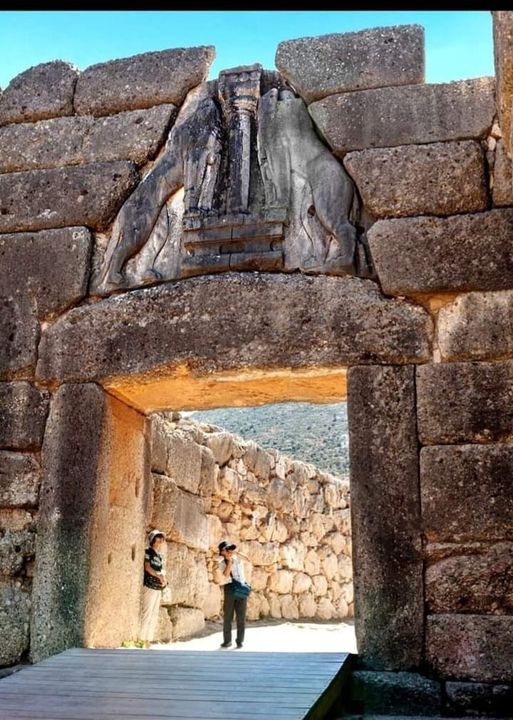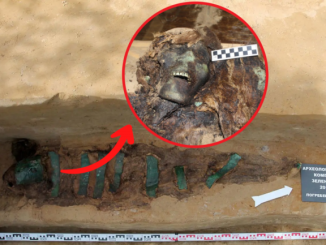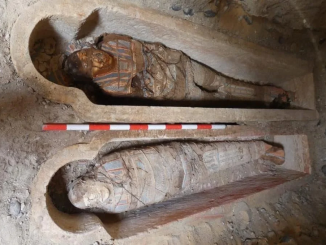At the heart of Mycenae, one of ancient Greece’s most significant archaeological sites, stands the Lions Gate, an awe-inspiring portal that has guarded the city since 1259 BC. This majestic gateway not only served as a defensive structure but also as a symbol of royal authority and the artistic prowess of the Mycenaean civilization.

Constructed during the height of Mycenaean power, the Lions Gate is the main entrance to the citadel of Mycenae, a city rich in both myth and history, often associated with the legendary king Agamemnon, who led the Greek forces during the Trojan War. The gate is renowned for its architectural and symbolic significance, featuring a relief sculpture of two lionesses or lions in a heraldic pose, which is carved into a large limestone slab above the gateway.
The photograph captures the imposing nature of the Lions Gate, with its massive stone structure and the iconic lion relief that dominates the top of the entrance. This relief is one of the earliest examples of monumental sculpture in Greece and reflects the Mycenaean’s skill in stonework and their sophisticated artistic expression. The lions are depicted standing on either side of a column that, although worn over the millennia, symbolizes a sacred pillar or a tree of life, a motif that suggests a religious or protective function.
The gate itself is constructed using Cyclopean masonry, a term used to describe the type of stonework found here, involving huge limestone boulders fitted together without mortar. The technique reflects the Mycenaeans’ advanced understanding of engineering and construction, which enabled them to create fortifications that could withstand both the test of time and the challenges of warfare.
Entering through the Lions Gate, visitors walk the same path that ancient Mycenaeans would have trodden, moving from the world outside into the heart of a powerful civilization. The gate thus serves as a threshold not just between different areas of the city but also between the world of the living and the revered ancestors, possibly aligning with the Mycenaean belief in the protective powers of the ancestral heroes.
Today, the Lions Gate remains a significant archaeological and tourist attraction, drawing visitors from around the world who come to marvel at its historical and architectural grandeur. The site offers a vivid window into the Mycenaean Age, providing insights into the military, cultural, and religious practices of early Greek civilization.
As it stands, the Lions Gate is not only a testament to Mycenaean architecture and artistry but also a symbol of the enduring legacy of ancient Greece’s architectural heritage. Its preservation and continued study provide valuable lessons on the technological and artistic achievements of the ancient world, making the Lions Gate a cornerstone for understanding the complex history of this intriguing period.


